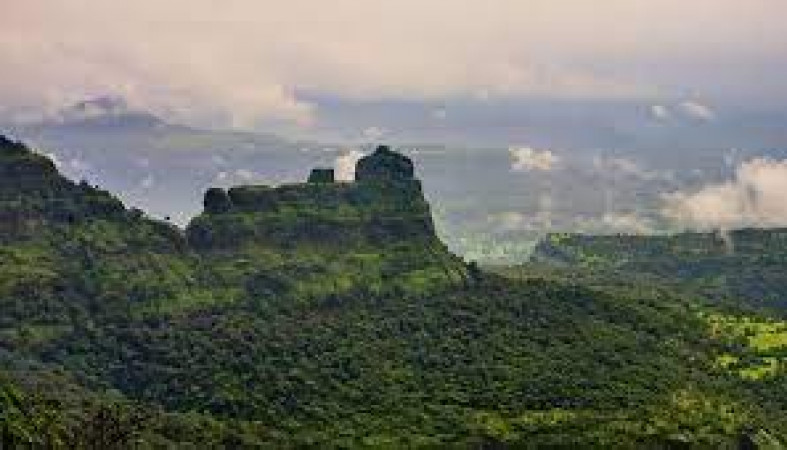
Bhimashankar Wildlife Sanctuary
Duration
2 to 4 Days
2 to 4 Days
Best time to visit
Oct-Feb
Oct-Feb
Theme
Wildlife, Religious
Wildlife, Religious
Bhimashankar Wildlife Sanctuary Travel Guide
Bhimashankar Wildlife Sanctuary is a renowned destination located in the state of Maharashtra, India. Known for its rich biodiversity and stunning landscapes, the sanctuary is a haven for nature lovers and wildlife enthusiasts. Established in 1984, the sanctuary is spread over an area of 130 square kilometers and is home to a variety of flora and fauna.Top Attractions in Bhimashankar Wildlife Sanctuary
1. Bhimashankar Temple 2. Hanuman Lake 3. Giant Squirrel Sanctuary 4. Bhimashankar Wildlife Reserve 5. Nagphani PointBhimashankar Wildlife Sanctuary is Famous for
Its diverse wildlife, including the Indian Giant Squirrel, and the ancient Bhimashankar Temple.Top Attractions in Bhimashankar Wildlife Sanctuary
- Bhimashankar Temple - Hanuman Lake - Giant Squirrel Sanctuary - Bhimashankar Wildlife Reserve - Nagphani PointWhat's Great about Travelling to Bhimashankar Wildlife Sanctuary?
- Ideal for nature lovers - Great for wildlife photography - Perfect for spiritual seekersWhat's Not So Great about Travelling to Bhimashankar Wildlife Sanctuary?
- Limited accommodation options - Remote location may not be suitable for all travelers - Limited dining optionsTravel Tips for Bhimashankar Wildlife Sanctuary
- Carry insect repellent and sunscreen - Respect the wildlife and follow park rules - Hire a local guide for the best experienceImportant Bhimashankar Wildlife Sanctuary trip information
- Ideal Duration: 2-3 days
- Best Time to Visit: October to February
- Nearby Airports and Railway Stations: Pune Airport and Pune Railway Station
FAQ's on Bhimashankar Wildlife Sanctuary
Q1: What is the best time to visit Bhimashankar Wildlife Sanctuary?
The best time to visit Bhimashankar Wildlife Sanctuary is during the winter months from November to February when the weather is pleasant and ideal for wildlife spotting. Avoid the monsoon season from June to September as heavy rains can make trekking challenging. The sanctuary is also popular during the monsoon for lush greenery but be prepared for wet conditions.
Q2: Do I need a visa to travel to Bhimashankar Wildlife Sanctuary?
Most visitors to Bhimashankar Wildlife Sanctuary will only need a tourist visa for India. Ensure your passport is valid for at least six months from the date of entry. Check the latest visa requirements as they may vary based on your nationality. Some nationalities may be eligible for e-visas or visa on arrival.
Q3: What are the must-visit attractions in Bhimashankar Wildlife Sanctuary?
The must-visit attractions in Bhimashankar Wildlife Sanctuary include the Bhimashankar Temple, Hanuman Lake, and the Shidi Ghat. Nature lovers can explore the lush forests and spot diverse wildlife like the Indian Giant Squirrel and Malabar Giant Squirrel. Trekking to the Bhimashankar Temple is a popular activity for visitors.
Q4: Is Bhimashankar Wildlife Sanctuary a safe place to travel?
Bhimashankar Wildlife Sanctuary is generally safe for tourists. However, it is advisable to follow standard safety precautions like avoiding isolated areas, securing your belongings, and respecting wildlife. Be cautious while trekking and follow the guidance of local guides. Check with authorities for any specific safety concerns.
Q5: What is the local currency in Bhimashankar Wildlife Sanctuary and can I use credit cards?
The local currency in India is the Indian Rupee (INR). It is recommended to carry cash for small purchases as credit cards may not be accepted everywhere, especially in rural areas. ATMs are available in nearby towns for currency exchange and cash withdrawals. Inform your bank of your travel plans to avoid any issues with card usage.
Q6: What is the local cuisine like in Bhimashankar Wildlife Sanctuary?
offers a variety of local delicacies such as Maharashtrian cuisine including Bhakri, Pithla, and Sabudana Khichdi. Vegetarian options are prevalent, reflecting local customs. Don't miss trying the famous Maharashtrian sweets like Puran Poli and Modak. Be aware of spice levels in dishes and inform restaurants of any dietary restrictions.
Q7: What transportation options are available in Bhimashankar Wildlife Sanctuary?
Transportation options in Bhimashankar Wildlife Sanctuary include buses, taxis, and private cars. Public transport may be limited, so hiring a taxi or renting a car is recommended for exploring the sanctuary. Trekking is a popular way to navigate the trails within the sanctuary. Plan your transportation in advance for a smoother travel experience.
Q8: Are there any cultural norms or etiquette I should be aware of when visiting Bhimashankar Wildlife Sanctuary?
When visiting Bhimashankar Wildlife Sanctuary, it is essential to respect local customs and traditions. Modest clothing is recommended when visiting religious sites like the Bhimashankar Temple. Always seek permission before taking photographs of locals. Avoid public displays of affection and abide by local rules and regulations. Engaging with the local community respectfully will enhance your travel experience.
Q9: I am a travel agent. How can I buy travel leads of Bhimashankar Wildlife Sanctuary?
Register yourself as a travel agent at agents.tripclap.com and then you can buy travel leads to Bhimashankar Wildlife Sanctuary once your account is approved. For more details contact our support team at +91-8069186564 or support@tripclap.com
